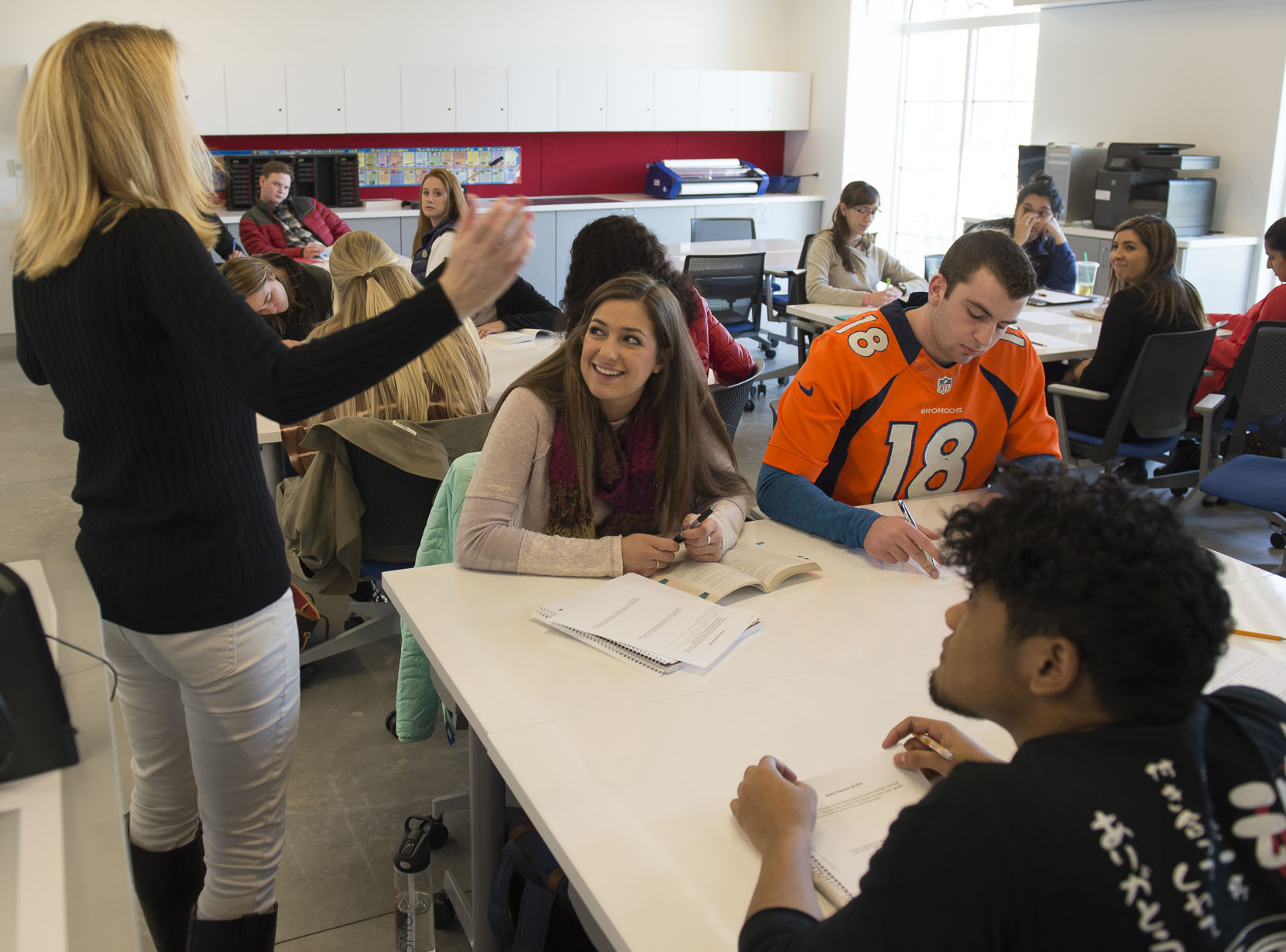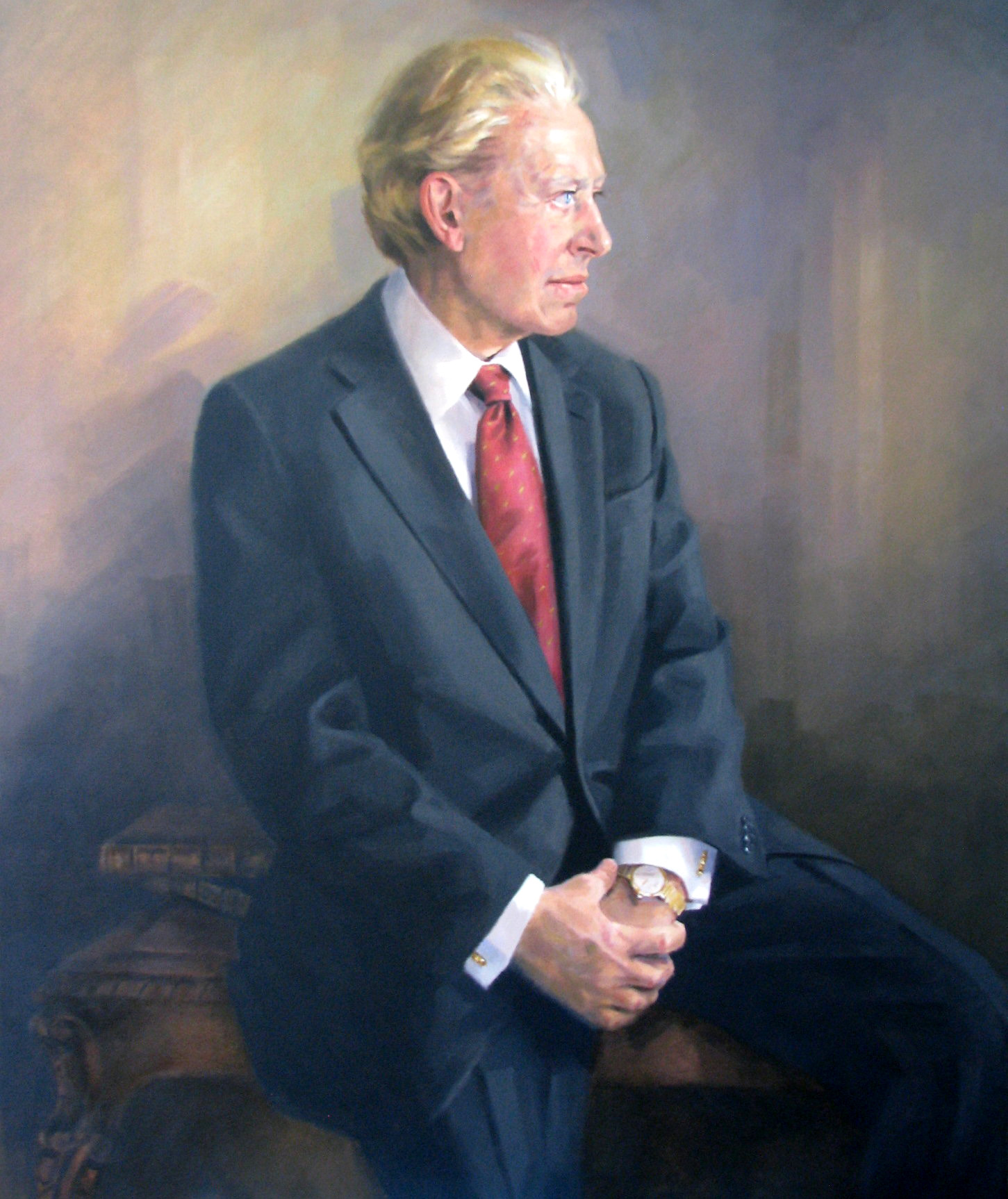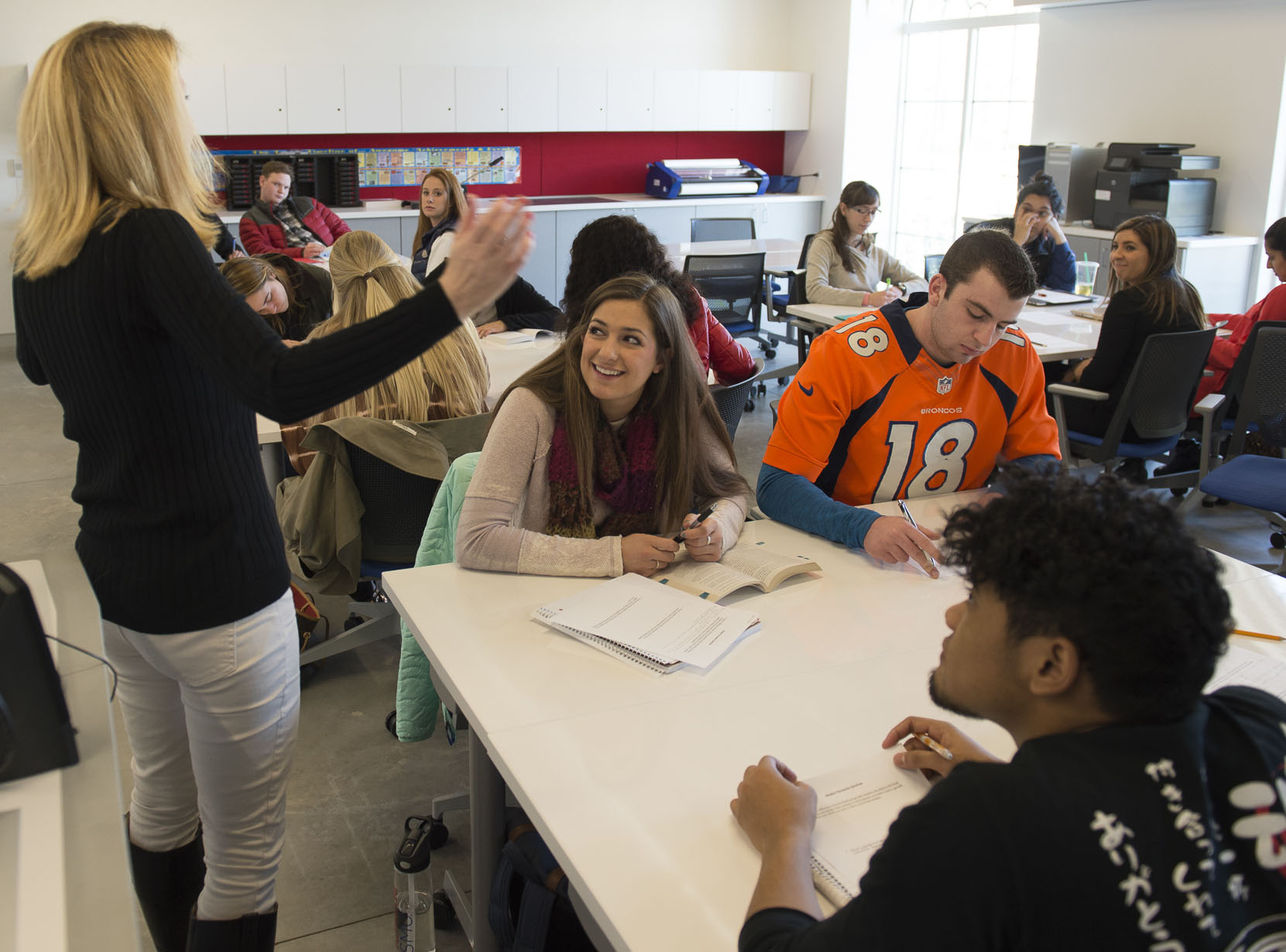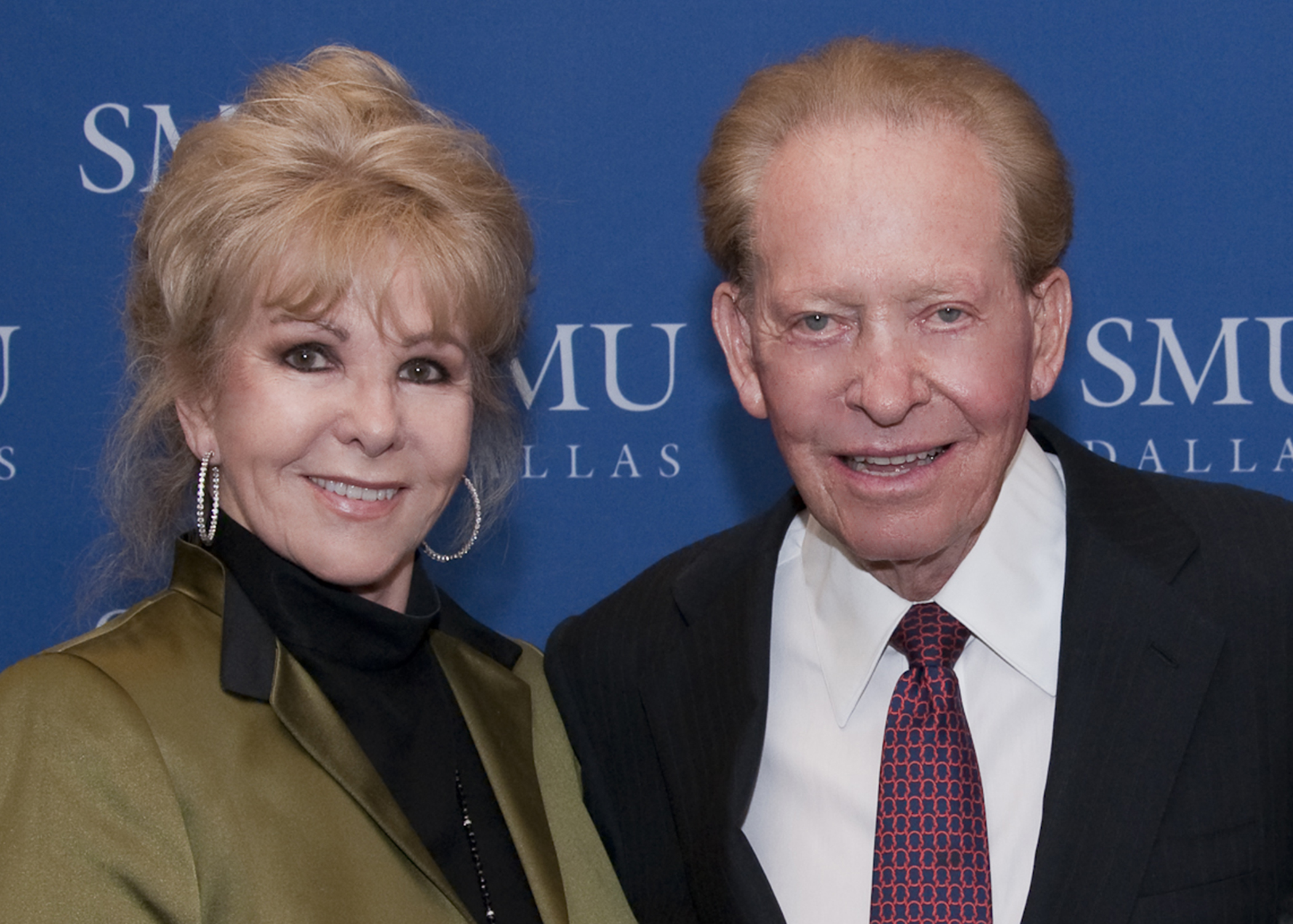SMU's new Harold Simmons Education Building designed for new generation of education leaders
SMU dedicates the Harold Simmons Education Building, designed for a new generation of educators.

DALLAS (SMU) – SMU dedicated Harold Clark Simmons Hall on Feb. 25, 2016, a three-story building serving a new generation of teachers and leaders to develop and use evidence-based strategies in education.
 Harold Clark Simmons portrait by Nancy Fleming Harris. |
The new hall, the second building for the Annette Caldwell Simmons School of Education and Human Development, is home to innovative teaching laboratories, a center that fights poverty through education and community support, as well as offices for faculty members and researchers. Annette Caldwell Simmons and her husband, the late Harold C. Simmons, gave $25 million in February 2013 to fund the new structure and three new endowed academic positions. Mrs. Simmons wished to recognize her husband and his lifelong commitment to education by naming Harold Clark Simmons Hall in his honor.
Previously in 2007, a historic $20 million gift by Mr. and Mrs. Simmons established endowments for the school and provided funding for the school’s first new building, Annette Caldwell Simmons Hall. The gift created an endowed graduate fellowship fund and an endowed deanship and faculty recruitment fund, both of which honored Mr. Simmons’ parents, who were educators in Golden, Texas. SMU named the Annette Caldwell Simmons School of Education and Human Development in recognition of this significant commitment.
“The Simmons partnership, and this new building, expand the critical national and international role the Simmons School plays in research, development of innovative programs and leadership in the field of education, ” said SMU President R. Gerald Turner. "Work performed here ranges from strengthening the academic skills of the youngest preschooler in West Dallas to conducting research on new uses of technology in education. We are grateful to Annette and Harold Simmons for their insight and encouragement of evidence-based education."
Situated on the SMU campus along Airline Drive, Harold Clark Simmons Hall is a 40,000-square-foot academic building constructed in the University’s distinctive collegiate Georgian style. It is home to the Budd Center: Involving Communities in Education, the Department of Teaching and Learning and the Teacher Development Studio. The facility also includes classrooms, faculty and administrative offices and conference rooms.
“The teachers and students in our region will be the beneficiaries of the Harold Clark Simmons Hall," said David J. Chard, Leon Simmons Endowed Dean of the Simmons School. “The teaching laboratories here will enable the Simmons School to help teachers optimize their impact on children's education. It also will serve as the hub of our community-based programs, enabling us to expand our understanding of the relationship between schools and the communities they serve.”
Previous gifts to SMU from Mr. and Mrs. Simmons include the endowment of four President’s Scholars and the creation of the Simmons Distinguished Professorship in Marketing in Cox School of Business. Mr. and Mrs. Simmons’ combined commitment to the Simmons School makes their gifts among the largest to SMU’s Second Century Campaign, also making them among the most generous donors in SMU’s more than 100-year history. In 2012, Mr. and Mrs. Simmons received the Mustang Award in recognition of their extraordinary philanthropic support of SMU.
Mrs. Simmons earned a B.S. degree in elementary education from SMU in 1957 and later taught first, second and third grades at Maple Lawn Elementary School in Dallas and at Clark Field, a U.S. air base in the Philippines. Mrs. Simmons is a former member of the board of the SMU Tate Distinguished Lecture Series and has been active in numerous other SMU programs and civic activities.
The late Mr. Simmons was founder, chair and CEO of Contran Corporation, a holding company with interests in several industries. He is a former member of the executive boards of Cox School of Business and Dedman College of Humanities and Sciences. His relationship with SMU began in 1961 when he bought a small drugstore near the campus, Simmons University Drug. The enterprise eventually expanded to 100 stores. He sold the chain in 1973, and it later became Eckerd Drugs.
The gift to support Harold Clark Simmons Hall counts toward SMU Unbridled: The Second Century Campaign, which concluded on Dec. 31 and raised more than $1 billion to support student quality, faculty and academic excellence and the campus experience.
"We are grateful for the inspiring generosity of Mr. and Mrs. Simmons for bringing resources to bear on national education issues that will strengthen our region and the lives of individuals for generations to come," said Brad Cheves, SMU vice president for development and external affairs.
About Harold Clark Simmons Hall
 The new Teacher Development Studio in the Harold Simmons Building enables students to use technology to practice their craft and develop new resources. |
Harold Clark Simmons Hall includes eight classrooms, including the McCarthy Classroom, given by Connie McCarthy Sigel '85 and Marc Sigel. Its six conference rooms include the McLamore Conference Room, a gift of the McLamore Family Foundation. The classrooms, conference rooms and 28 faculty offices feature floor-to-ceiling white boards to facilitate interactive learning. In addition, two-story naturally lit porticoes at the north and south ends of the building provide comfortable settings for study or discussion. A rose garden connects Harold Clark Simmons Hall to SMU's first education building, Annette Caldwell Simmons Hall.
The hall also serves as home for these innovative programs of the Annette Caldwell Simmons School of Education and Human Development:
- The Budd Center: Involving Communities in Education focuses on a strategic and holistic approach to fighting poverty by transforming education. Endowed in 2014 by Russell and Dorothy Budd ’06, the center leads The School Zone, a West Dallas partnership of 32 social service agencies and 16 public, private and charter schools. The Budd Center equips school districts and nonprofits to work together to meet the extraordinary needs of children living in poverty. The center builds data-sharing and legal infrastructure and teaches partners to translate data and use it to develop highly targeted plans for struggling students. The center also creates networking, training and professional development experiences for partners to strengthen their ability to accelerate students’ academic success. The Budd Center’s work in West Dallas serves as a model that can be replicated by other communities. New projects have launched in the Dallas Independent School District and in Taos, New Mexico.
- The Teacher Development Studio occupies three laboratories technologically equipped to train students to become effective teachers. The Teaching Performance Lab simulates pre-K–12 classroom environments with computer avatars standing in for students. Education students use video game technology to interact with simulated students. Students in the Assessment Lab learn to use software, which will enable them to create assessments and evaluate student performance. Assessment outcomes are relayed to the Instructional Design Lab where education students learn to create the resources to connect with their students. With technology like 3-D printers, 70-inch touch screens and large format printers, students learn to develop unit and lesson plans and technology applications to support student learning.
- The Department of Teaching and Learning prepares educators to be scholars and leaders through teacher education programs at the undergraduate, post baccalaureate and graduate levels. Faculty members combine years of classroom experience with a deep knowledge of research-based practices to create high-quality learning environments. Many faculty members are actively involved in the local education community and work in schools, focusing on reading, bilingual education, mathematics and special education. Programs offer students a comprehensive curriculum of theory, research, cross-disciplinary studies and practical experience.
About the Simmons School
Annette and Harold SimmonsSince 2007, the Simmons School has expanded from one department and several programs to five departments – Teaching and Learning, Education Policy and Leadership, Counseling and Dispute Resolution, Applied Physiology and Sport Management and Graduate Liberal Studies – offering 15 graduate degree programs and two undergraduate degree programs. The school has grown from 13 full-time faculty members and 42 staff members to 80 full-time faculty members and 86 full-time staff members. Research funding has increased to $36 million since 2007. In addition, the school hosts research conferences and provides continuing education to teachers throughout North Texas.
The school also has developed community outreach programs that complement degree programs. These include the Budd Center: Involving Communities in Education, the Center on Research and Evaluation, Research in Mathematics Education, college access programs, and counseling and conflict resolution services. The school also partners with the Bush Institute on two landmark education initiatives, Middle School Matters and The Alliance to Reform Education Leadership.
Related Link:
- The Dallas Morning News: SMU dedicates Harold Clark Simmons Hall
###
SMU is a nationally ranked private university in Dallas founded more than 100 years ago. Today SMU enrolls nearly 11,000 students who benefit from the academic opportunities and international reach of seven degree-granting schools.
